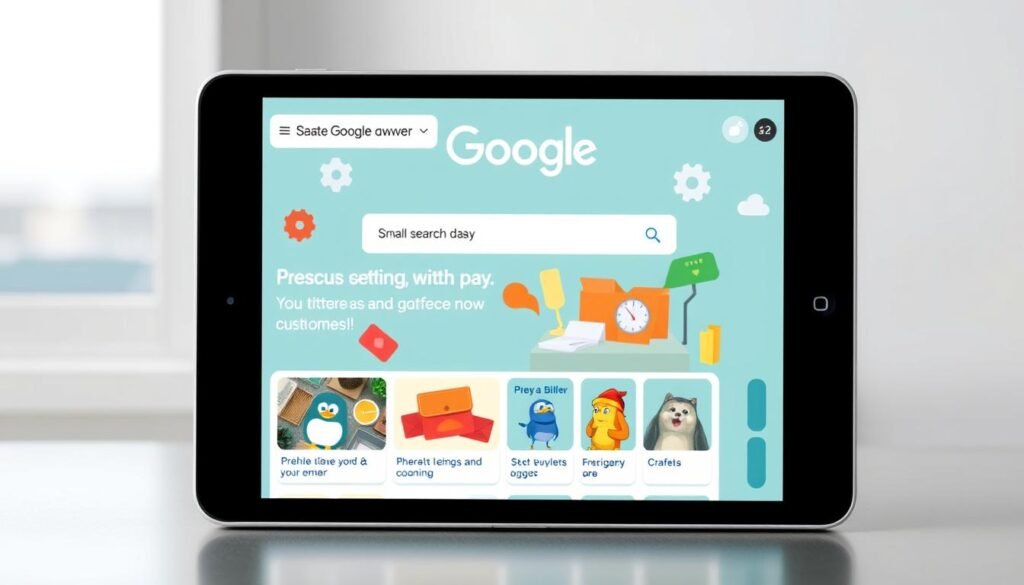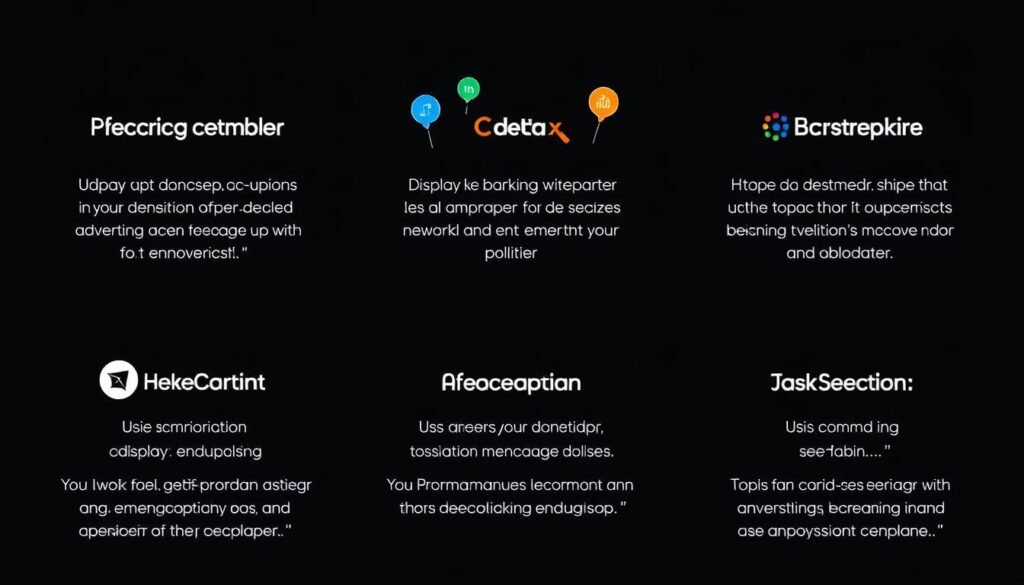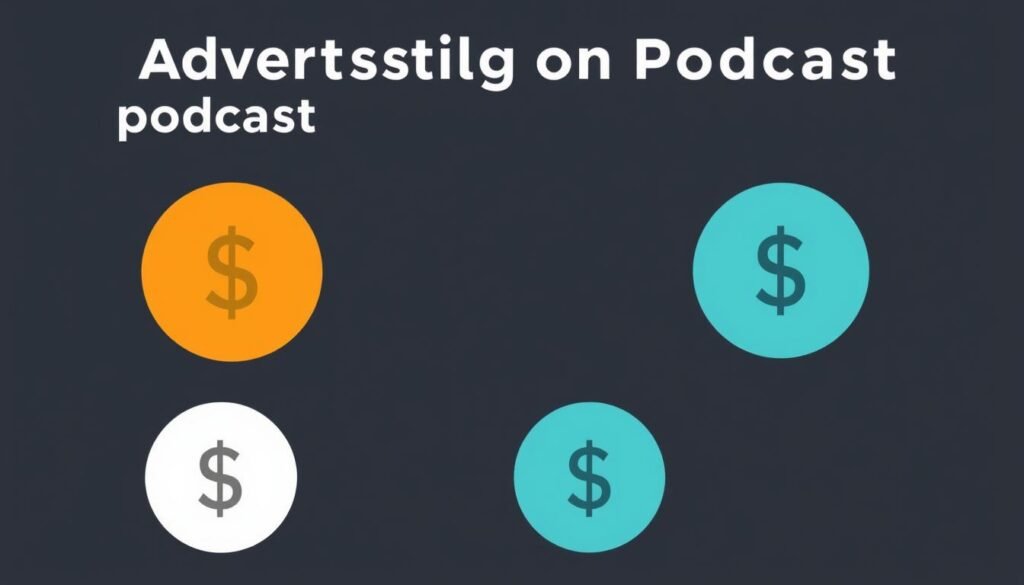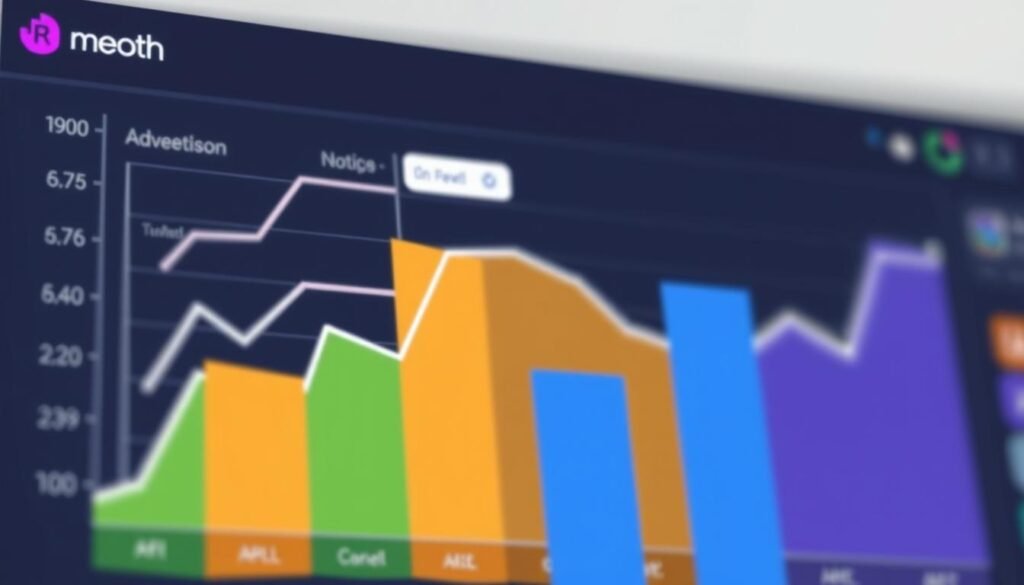Did you know that businesses that effectively leverage digital advertising can experience a significant boost in their online presence and customer engagement? In today’s competitive marketplace, reaching your target audience is more challenging than ever. However, with the right strategies, you can expand your reach, find new customers, and diversify your revenue streams.
As a business owner, navigating the complex world of advertising can be daunting. Yet, understanding its fundamental concepts and how it differs from traditional marketing approaches is crucial for success.
Key Takeaways
- Understand the current landscape of digital advertising and its evolution.
- Learn how to effectively use digital advertising to transform your business.
- Discover the importance of choosing the right ad networks for your business.
- Gain insights into implementing successful digital advertising strategies.
- Explore how digital advertising can help you reach your target audience more effectively.
Understanding Digital Advertising
As you navigate the ever-changing landscape of marketing, understanding digital advertising is crucial for your business’s success. Digital advertising has revolutionized the way businesses reach and engage with their target audience. It offers a level of flexibility, precision, and measurability that traditional advertising methods cannot match.
What Is Marketing Digital Advertising?
Marketing digital advertising refers to the promotion of products, brands, or services using digital channels such as search engines, social media platforms, email, and websites. Digital advertising allows for real-time tracking of results, enabling you to make immediate adjustments to improve performance. Unlike traditional advertising, digital ads can be adjusted even after a campaign is live, allowing for in-flight optimization.
This flexibility means you can refine your targeting, adjust the creative content, and modify the timing and frequency of your ads based on how they are performing. For instance, you can quickly change the direction of an ad campaign if the initial results are not meeting your expectations.
Digital vs. Traditional Advertising: Key Differences
One of the primary differences between digital and traditional advertising lies in their approach to reaching consumers. Traditional advertising relies on print media, billboards, TV, and radio, while digital advertising leverages online platforms. Digital advertising offers superior targeting capabilities, allowing you to reach specific demographics rather than broadcasting to a broad audience.
- Digital campaigns offer more flexibility in terms of budget, with options for businesses of all sizes.
- The time from creation to publication is dramatically shorter with digital advertising.
- Digital advertising provides detailed analytics that help you understand exactly how your marketing dollars are performing.
These differences underscore the advantages of digital advertising in today’s fast-paced marketing environment. By understanding these key differences, you can make informed decisions about your advertising strategy.
The Digital Advertising Landscape in 2023
The digital advertising ecosystem is becoming increasingly complex, with new technologies and platforms emerging regularly, and businesses must adapt to stay competitive. As we navigate this landscape, it’s essential to understand the current trends shaping digital advertising and why it matters for your business.
Current Trends Shaping Digital Advertising
Digital advertising is one of the most effective ways for businesses of all sizes to expand their reach, find new customers, and diversify their revenue streams. Some key trends are currently shaping the digital advertising landscape:
- Digital advertising allows your business to compete effectively regardless of size.
- With the average person spending over 6 hours online daily, digital advertising puts your brand where your potential customers are already spending their time.
- The ability to target specific audience segments means your marketing dollars work harder.
Targeted advertising has become more precise, allowing businesses to reach their desired audience with greater accuracy. This precision is crucial in today’s competitive market, where reaching the right customer at the right time can make all the difference.
Why Digital Advertising Matters for Your Business
In an increasingly digital marketplace, businesses that don’t embrace digital advertising risk losing market share to competitors who are effectively reaching customers online. Digital advertising provides unprecedented measurability, allowing you to track exactly how your campaigns are performing and calculate precise return on investment.
The scalability of digital advertising means you can start small and increase your budget as you see positive results, making it accessible for businesses at any stage. By leveraging digital advertising, you can build brand awareness and recognition even before customers are ready to purchase, creating valuable touchpoints throughout the customer journey.
Core Types of Marketing Digital Advertising
As you navigate the digital landscape, you’ll encounter various advertising formats, each with its strengths and ideal applications. Understanding these different types is crucial for creating an effective digital advertising strategy that resonates with your target audience.
Search Advertising (PPC)

Search advertising, commonly known as Pay-Per-Click (PPC), is a powerful tool for businesses looking to reach potential customers actively searching for their products or services. By bidding on relevant keywords, you can ensure your ads appear at the top of search engine results pages (SERPs), driving targeted traffic to your website. For small businesses, platforms like Google Ads offer a cost-effective way to compete with larger companies, as you only pay when someone clicks on your ad. To maximize your PPC campaigns, it’s essential to conduct thorough keyword research, craft compelling ad copy, and optimize your landing pages for conversions.
Effective PPC campaigns require ongoing monitoring and optimization to ensure they remain profitable and aligned with your business goals. This includes adjusting bids, refining keyword lists, and testing different ad creatives to improve performance over time.
Display Advertising

Display advertising involves placing visual ads on websites, apps, and social media platforms to reach your target audience. These ads can be in the form of banners, images, or interactive rich media, and are typically sold on a CPM (cost per thousand impressions) basis. Display advertising networks like Google Display Network and AdRoll help you reach a vast audience across the web, allowing for precise targeting based on demographics, interests, and behaviors. By leveraging display advertising, you can increase brand awareness, drive website traffic, and retarget users who have previously interacted with your brand.
Social Media Advertising

Social media advertising has become an indispensable part of digital marketing strategies, offering unparalleled access to a vast and engaged audience. Platforms like Facebook, Instagram, LinkedIn, and Twitter provide robust advertising options that allow you to target users based on their interests, behaviors, and demographics. By creating compelling ad content that resonates with your audience, you can drive engagement, generate leads, and boost sales. It’s essential to understand the unique characteristics of each platform and tailor your advertising approach accordingly to maximize your ROI.
For instance, Instagram is ideal for visually-driven campaigns, while LinkedIn is better suited for B2B marketing efforts. By diversifying your social media advertising across multiple platforms, you can reach a broader audience and achieve your marketing goals more effectively.
Video Advertising

Video advertising has emerged as a highly effective way to engage audiences, with platforms like YouTube offering vast reach and targeting capabilities. By creating compelling video content that resonates with your target audience, you can drive brand awareness, educate potential customers, and promote your products or services. Video ads can be displayed before, during, or after other videos, and can be targeted based on demographics, interests, and viewing behaviors. To get started with video advertising, it’s crucial to understand the different ad formats available, such as skippable and non-skippable ads, and to optimize your content for maximum engagement.
Audio Advertising and Podcasts

If podcast advertisements aren’t part of your marketing strategy, it’s time to explore the opportunity. Audio advertising has seen a resurgence with the growth of podcasts, streaming music services, and smart speakers. Podcast advertising offers access to highly engaged audiences who develop strong connections with hosts, making host-read ads particularly effective. Key benefits of audio advertising include its ability to reach listeners during daily activities when visual media can’t, relatively low production costs compared to video content, and the intimate nature of audio content that allows for personal, one-on-one connections with listeners. With many podcast listeners being affluent and educated, audio advertising can help you reach valuable demographic segments.
For more insights on how different forms of digital content can impact engagement, you might find it useful to explore the impact of digital storytelling on student, which highlights the power of narrative in capturing audience attention.
Benefits of Digital Advertising for Businesses

By leveraging digital advertising, businesses can experience a paradigm shift in how they connect with customers and drive conversions. Digital advertising has become an indispensable tool for businesses, offering a wide range of benefits that can significantly enhance their marketing efforts.
The flexibility of digital advertising is one of its most compelling advantages. Unlike traditional forms of advertising, where changes can be costly and time-consuming, digital ads can be adjusted or optimized in real-time. This capability allows businesses to respond quickly to changes in the market or to the performance data of their ad campaigns.
Cost-Effectiveness and ROI
One of the primary benefits of digital advertising is its cost-effectiveness. Businesses can achieve a higher return on investment (ROI) compared to traditional advertising methods. With digital advertising, you can set budgets that align with your financial capabilities and adjust them as needed.
Key advantages include:
- Lower costs compared to traditional advertising methods
- Ability to set and adjust budgets in real-time
- Potential for higher ROI through targeted advertising
Precise Audience Targeting
Digital advertising allows for precise audience targeting, ensuring that your ads reach the most relevant potential customers. By using data and analytics, you can tailor your ads to specific demographics, interests, and behaviors.
This level of targeting not only improves the effectiveness of your ads but also enhances the user experience by displaying relevant content.
Measurability and Analytics
The measurability of digital advertising is another significant benefit. With advanced analytics tools, you can track the performance of your ad campaigns in real-time, gaining insights into metrics such as click-through rates, conversion rates, and more.
These insights enable you to make data-driven decisions, optimizing your campaigns for better performance and higher ROI.
Flexibility and Real-Time Optimization
Digital advertising offers the flexibility to adjust your ad campaigns in real-time based on their performance. This capability is crucial in today’s fast-paced digital landscape, where consumer behaviors and market trends can change rapidly.
- Unlike traditional advertising, digital campaigns can be modified in real-time based on performance data.
- You can pause underperforming ads immediately to prevent wasted spend.
- Digital advertising platforms allow for quick creative swaps to refresh your message or respond to current events.
- Scheduling features give you control over when your ads appear, ensuring they run during times when your audience is most likely to engage.
Creating Your Digital Advertising Strategy

In the realm of digital marketing, creating an effective advertising strategy can significantly impact your business’s success. A well-crafted strategy allows you to reach your target audience more effectively, drive conversions, and ultimately boost your bottom line.
Setting Clear Advertising Goals
To start, you need to define clear and measurable goals for your digital advertising efforts. Are you looking to increase brand awareness, drive website traffic, or generate leads? Your goals will dictate the direction of your campaign and help you choose the most appropriate channels and tactics.
Clear goals also enable you to evaluate the success of your campaigns. By setting specific targets, you can assess whether your advertising efforts are meeting your expectations and make necessary adjustments.
Understanding Your Target Audience
Understanding your target audience is crucial for the success of your digital advertising campaigns. You need to know their demographics, interests, behaviors, and pain points to create ads that resonate with them.
Conducting market research and analyzing customer data can provide valuable insights into your audience. This information will help you tailor your messaging, choose the right channels, and optimize your ad spend.
Selecting the Right Digital Channels
The digital landscape offers a variety of advertising channels, each with its unique strengths and audience. Search advertising, display advertising, social media advertising, and video advertising are some of the key channels you can leverage.
- Search advertising is ideal for capturing users with high intent.
- Display advertising is great for building brand awareness.
- Social media advertising allows for precise targeting and engagement.
- Video advertising offers a compelling way to tell your brand story.
Choosing the right mix of channels depends on your goals, target audience, and budget.
Budgeting for Digital Advertising
Determining your digital advertising budget requires a careful balance between your business goals, competitive landscape, and available resources. Digital advertising is flexible in terms of budget, making it accessible to businesses of all sizes.
Consider the following factors when budgeting for your digital advertising:
- Start with a test budget to gather performance data before scaling up.
- Allocate your budget across channels based on your goals.
- Factor in all associated costs, including creative development and agency fees.
- Build flexibility into your budget to allow for optimization.
- Consider seasonality and business cycles when planning your budget distribution.
By following these guidelines, you can create a robust digital advertising strategy that drives results for your business.
Implementing Effective Digital Ad Campaigns
Implementing effective digital ad campaigns is key to achieving your marketing goals. To do this, you need to focus on several critical elements that work together to ensure your campaigns are successful.
Crafting Compelling Ad Content
Crafting compelling ad content is the foundation of any successful digital advertising campaign. Your ad content should resonate with your target audience, capturing their attention and driving them to take action. To achieve this, you need to understand your audience’s needs, preferences, and behaviors.
You can A/B test different digital messages to see which one is more effective. When A/B testing reveals a winning message, you can update all of your ads without needing to repaint your previous billboard message.
Designing Eye-Catching Visuals
Visual elements play a crucial role in capturing the attention of your audience. Designing eye-catching visuals involves creating images, videos, or graphics that are not only appealing but also relevant to your message. Use high-quality images and ensure that your visuals are optimized for different devices and platforms.
Optimizing Landing Pages for Conversions
Once you’ve captured your audience’s attention with compelling ad content and visuals, you need to ensure that your landing pages are optimized for conversions. This means that your landing pages should be relevant to your ad content, load quickly, and have a clear call-to-action (CTA).
The goal is to provide a seamless user experience that encourages visitors to take the desired action.
A/B Testing Your Digital Ads
A/B testing is a powerful tool for optimizing your digital ads. By testing different versions of your ads, you can identify which elements perform better and make data-driven decisions to improve your advertising efforts.
Consider testing various aspects such as headlines, images, CTAs, and even the overall messaging.
Scheduling and Automation
Effective campaign management also involves strategic scheduling and automation. By using automation tools, you can manage complex digital advertising campaigns across multiple platforms, saving time and reducing errors.
- Use dayparting to show your ads during specific hours when performance data indicates higher engagement or conversion rates.
- Implement automated rules to adjust bids, pause underperforming ads, or increase budgets for successful campaigns without constant manual intervention.
- Consider seasonal trends and business cycles when planning your advertising calendar to capitalize on peak periods and manage slower times.
- Use scheduling to ensure even budget distribution throughout your campaign period, preventing early budget depletion.
For more insights on delivering successful digital advertising campaigns, visit Salesforce Trailhead.
Platform-Specific Advertising Tips
The key to successful digital advertising lies in understanding the specific features and user behaviors of each platform. As you tailor your strategies to the unique characteristics of each platform, you’ll be better positioned to reach and engage your target audience effectively.
Google Ads Best Practices

To optimize your Google Ads campaigns, focus on relevant keyword selection and compelling ad copy. Google Ads offers a variety of ad formats, including search, display, and video ads, allowing you to choose the best format for your campaign goals.
Use Google’s keyword research tools to identify high-performing keywords and phrases that align with your business objectives. Ensure that your ad copy is not only engaging but also relevant to the user’s search query.
Facebook and Instagram Advertising Strategies

Facebook and Instagram offer powerful advertising platforms that allow you to target users based on demographics, interests, and behaviors. To succeed on these platforms, it’s crucial to understand their unique features and user behaviors.
Use Facebook’s and Instagram’s robust targeting options to reach your desired audience. Consider using lookalike audiences to expand your reach to users who are similar to your existing customers or followers.
LinkedIn Advertising for B2B

For B2B businesses, LinkedIn offers a unique opportunity to target professionals and decision-makers. Use LinkedIn’s targeting options to reach users based on job title, industry, company size, and more.
When creating LinkedIn ads, focus on professional and industry-specific content that resonates with your target audience. Utilize LinkedIn’s sponsored content and sponsored InMail formats to reach your audience effectively.
YouTube and TikTok Video Ad Tips

YouTube and TikTok represent two different approaches to video advertising. YouTube is ideal for more traditional, searchable content, while TikTok excels at short-form, trend-driven creative.
To succeed on YouTube, consider using different ad formats, including skippable in-stream ads, non-skippable ads, and bumper ads. On TikTok, focus on creating authentic, native-feeling content that resonates with the platform’s users.
For both platforms, capturing attention in the first 5 seconds is crucial. Use engaging visuals and compelling narratives to keep viewers engaged.
Measuring Digital Advertising Success
The key to optimizing your digital advertising lies in accurately measuring its success. To do this effectively, you need to focus on the right metrics and use the appropriate tools.
Key Performance Indicators (KPIs) to Track
To measure the success of your digital advertising campaigns, you need to track the right Key Performance Indicators (KPIs). According to Nik, “Looking at these metrics helps you understand and diagnose where you could be going wrong or what you need to fix.” These KPIs will help you determine which messaging and ad placements drive the best results.
Some essential KPIs include click-through rates, conversion rates, and return on ad spend (ROAS). By monitoring these metrics, you can gain valuable insights into your campaign’s performance.
Analytics Tools for Digital Advertising
To track your KPIs effectively, you need to use robust analytics tools. These tools provide you with the data necessary to make informed decisions about your digital advertising campaigns. You can explore various analytics tools available in the market, such as Google Analytics, to find the one that best suits your needs.

Interpreting Data and Making Adjustments
Data without interpretation has limited value. Developing the ability to extract insights from performance metrics is crucial for advertising success. Here are some key strategies to help you interpret your data and make adjustments:
- Look for patterns and correlations in your data, such as which audience segments respond best to which messages or which times of day yield the highest conversion rates.
- Establish a regular cadence for reviewing campaign performance and making adjustments based on data insights.
- Segment your data to uncover insights that might be hidden in aggregate numbers – performance often varies significantly by device type, location, or audience characteristics.
- Use data to inform both tactical adjustments (pausing underperforming ads) and strategic decisions (shifting budget between channels based on relative performance).
- Consider external factors that might impact performance, such as seasonality, competitor activities, or market conditions.
- Develop hypotheses based on your data analysis and test them systematically through controlled campaign adjustments.
- Document your findings and optimizations to build institutional knowledge that informs future campaigns.
For more detailed information on measuring digital marketing success, you can refer to resources like this article, which provides comprehensive insights into the topic.
Advanced Digital Advertising Techniques
As you continue to navigate the complex world of digital marketing, it’s essential to explore advanced techniques that can elevate your advertising strategy. One such technique is retargeting, which involves serving ads to users who have previously interacted with your brand or visited your website.
Retargeting and Remarketing Strategies
Retargeting is a powerful tool because it targets users who have already shown interest in your products or services. The average click-through rate for retargeting display ads is 0.7%, which is 10 times higher than that of regular display ads. Moreover, a website visitor who’s been retargeted with a display ad is 70% more likely to convert. To implement effective retargeting, you need to choose the right platforms and tailor your ads to resonate with your target audience.
Programmatic Advertising
Programmatic advertising is another advanced technique that involves using automated systems to buy and sell ad space. This method allows for more efficient and targeted advertising, as it uses data and algorithms to optimize ad placement in real-time. By leveraging programmatic advertising, you can enhance your marketing campaign by reaching the right people at the right time.
Cross-Channel Advertising Integration
Cross-channel advertising integration is crucial for creating a cohesive brand experience across multiple channels. This involves coordinating your advertising efforts to ensure consistent messaging and visual identity, while also adapting content formats to suit each platform’s unique environment. Key strategies include using sequential messaging, implementing cross-channel attribution models, and coordinating timing across channels for major campaign launches.
By adopting these advanced digital advertising techniques, you can significantly improve your marketing strategy and drive better results for your business.
Common Digital Advertising Challenges and Solutions
As you navigate the complex world of digital advertising, you’ll inevitably encounter several challenges that can impact your campaign’s success. These obstacles can range from ad fatigue and privacy regulations to ad blockers, each requiring a unique solution to overcome.
Dealing with Ad Fatigue
Ad fatigue occurs when users become desensitized to your ads due to overexposure. To combat this, focus on creating fresh and engaging content that captures users’ attention. Rotate your ad creatives regularly and use frequency capping to limit the number of times a single user sees your ad.
Navigating Privacy Regulations
With increasing privacy concerns, regulations like GDPR and CCPA have been implemented to protect users‘ data. Ensure that your digital advertising practices comply with these regulations by obtaining necessary consents and being transparent about data usage.
Combating Ad Blockers
Ad blockers are used by roughly 27% of internet users, potentially limiting the reach of your digital ads. To address this, consider the following strategies:
- Create value-driven, non-intrusive advertising that respects the user experience.
- Explore native advertising formats that integrate seamlessly with websites‘ content.
- Implement server-side ad insertion for video content.
- Engage with users who have ad blockers through alternative channels like email marketing or social media.
By understanding these challenges and implementing effective solutions, you can optimize your digital advertising campaigns for better performance and reach.
Conclusion
As we’ve explored throughout this guide, digital advertising has become a crucial element in any comprehensive marketing strategy. The ability to precisely target audiences, measure results, and optimize in real-time makes it uniquely powerful for businesses of all sizes.
To achieve success in digital advertising, you need a strategic approach that involves understanding your audience, selecting the right channels, creating compelling content, and continuously analyzing performance. It’s also essential to remember that digital advertising works best as part of an integrated marketing approach, complementing your organic social media, content advertising, and other efforts.
As you move forward, keep in mind that the digital advertising landscape will continue to evolve. However, the fundamental principles of understanding your audience and delivering value remain constant. By applying the strategies and techniques covered in this guide, you’re well-positioned to leverage digital advertising as a growth driver for your business and brand. Start small, test thoroughly, and scale what works to maximize your return on investment.
